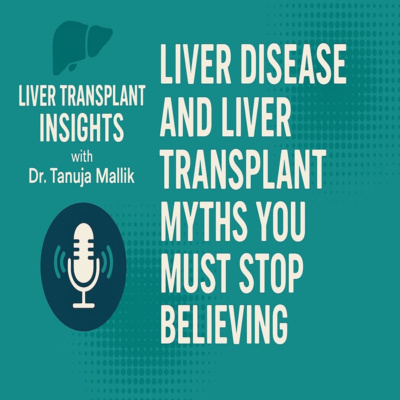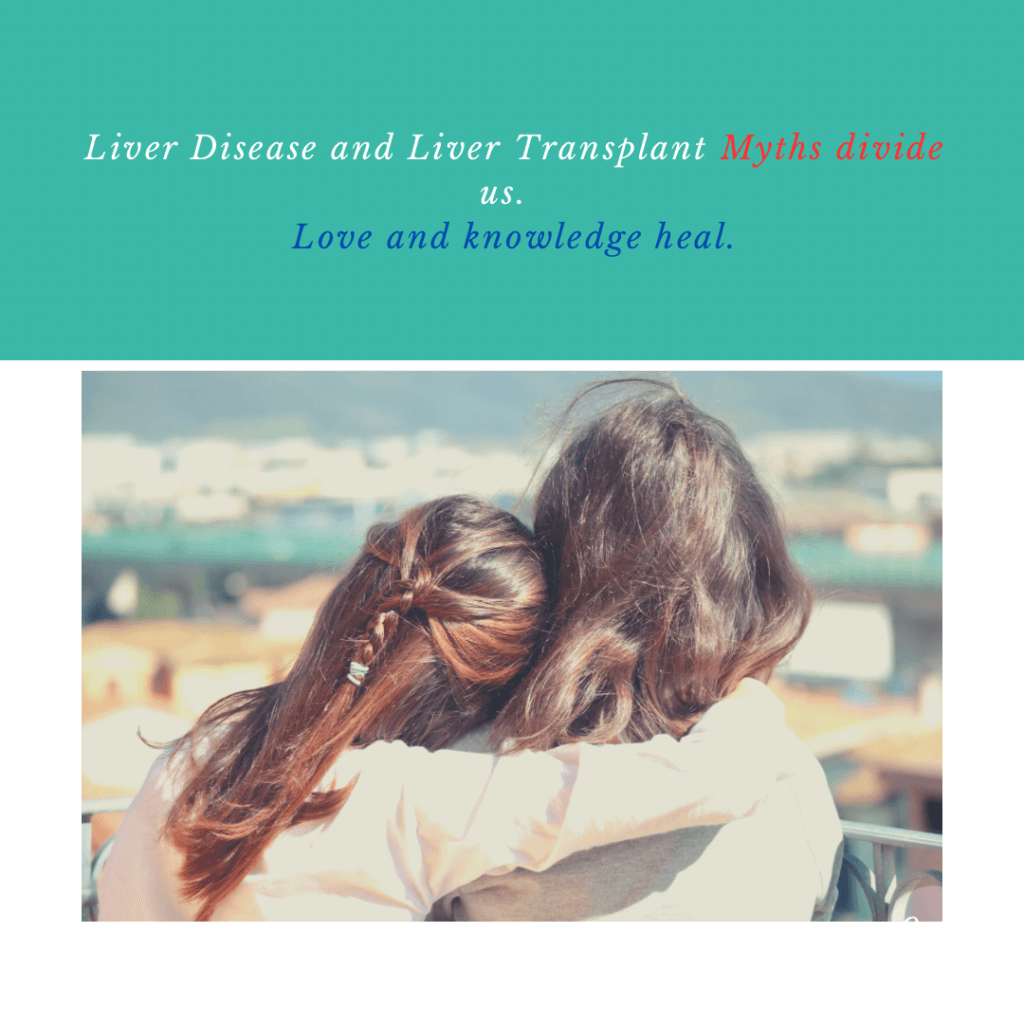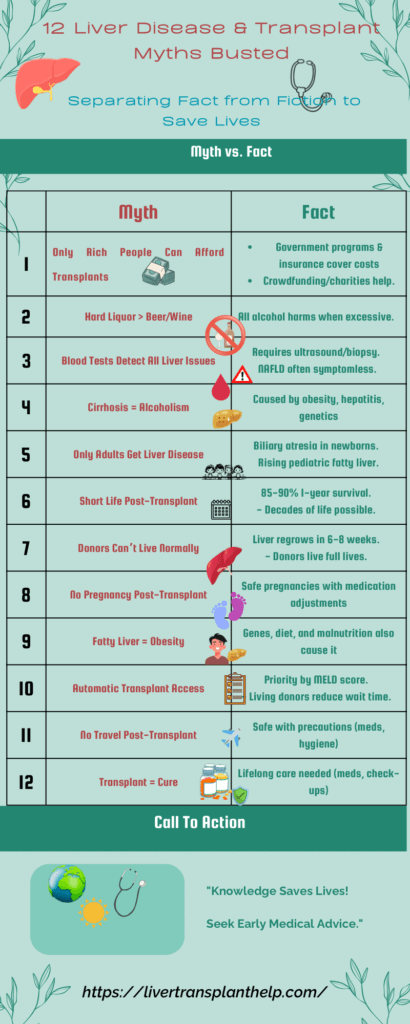Introduction
Liver Disease and Liver Transplant Myths can lead to fear, delayed treatment, and even life-threatening decisions. Myths like “only alcoholics get liver disease,” “liver transplant patients don’t survive,” and “simple blood tests can detect all liver diseases” are widely held. People may be discouraged from seeking early diagnosis and essential treatments as a result of these misunderstandings.
This post dispels 12 common misconceptions about liver illness and transplants, empowering you to adopt an optimistic approach and make informed health decisions.
🎙️Podcast: 12 Liver Disease and Liver Transplant Myths You Must Stop Believing

Infographic: Liver Disease & Transplant Myths
Myth #1: Only Rich People Can Afford a Liver Transplant
One very common Liver Disease and Liver Transplant Myth is that it’s treatment affordability. The truth is that insurance, government assistance, and charitable organisations can provide financial support for a liver transplant.
Many people think that only the wealthy can undergo a liver transplant. Despite their high cost, they are accessible through several support systems:
- In many nations, government healthcare programs offer free or heavily discounted transplants.
- Most transplant costs are covered by health insurance.
- Funds for those in need are raised through charity and crowdfunding.
A liver transplant is a medical need that many people can obtain with the correct assistance; it is not a luxury for the wealthy.
“Health is not about wealth; it’s about hope.”
Myth #2: Hard Liquor Is Worse for the Liver Than Beer or Wine
The truth is that excessive alcohol consumption harms the liver in the same way.
Many people believe that wine or beer is better for the liver than alcohol or rum. Ethanol, which is dangerous in excess, is a component of all alcoholic beverages.
- The amount of alcohol in one typical glass of wine, whiskey, or beer is comparable.
- The most important factors are the amount and frequency of alcohol usage.
- Liver failure, fatty liver, and liver cirrhosis can result from excessive drinking.
The most secure choice? For the sake of liver health, drink alcohol sparingly or not at all.
“Your liver doesn’t care about the brand—it cares about balance.”
Myth #3: A Simple Blood Test Can Detect All Liver Diseases
Liver Disease and Liver Transplant Myths often mislead patients into thinking a single blood test guarantees a clean bill of health, but early detection requires comprehensive care, not guesswork.
Many people believe they have a healthy liver if their liver function test (LFT) is normal. However, certain illnesses do not exhibit abnormal blood test results in their early stages, and liver disease can be silent.
- More precise diagnoses are made by liver biopsy, MRI, FibroScan, and ultrasound.
- Certain liver conditions, such as non-alcoholic fatty liver disease (NAFLD), develop without any outward signs.
Advanced diagnostic tests and routine health examinations aid in early detection.
“Good health isn’t about guessing—it’s about testing.”
Myth #4: Cirrhosis Happens Only Due to Alcoholism
Truth: Contrary to Liver Disease and Liver Transplant Myths, cirrhosis isn’t caused by alcohol alone—obesity, viral infections, and even genetics can silently scar your liver
Although it’s not the primary reason, alcohol is a well-known contributor to cirrhosis.
- Cirrhosis can result from Non-Alcoholic Fatty Liver Disease (NAFLD), which is brought on by diabetes and obesity.
- Liver scarring is a consequence of hepatitis B and C infections.
- Cirrhosis is also brought on by hereditary abnormalities and autoimmune diseases.
This disorder can occur even in those who have never had alcohol.
“Cirrhosis is not just about alcohol—it’s about awareness.”
Myth #5: Liver Disease Only Happens in Adults
Liver Disease and Liver Transplant Myths wrongly claim these conditions only strike adults. But the fact is that liver disease can also strike children.
- Although liver problems can begin at any age, many people believe that liver illness only affects elderly people.
- Newborns are susceptible to biliary atresia, a common liver ailment.
- Children’s liver illness can be brought on by hepatitis, metabolic diseases, and genetic factors.
- Children are becoming more prone to fatty liver disease as a result of poor diet and obesity.
Severe liver problems can be avoided in all age groups with early diagnosis and healthy lifestyle modifications.
“Liver health begins at birth—care for it early.”
Myth #6: Patients Die Soon After a Liver Transplant
The truth is that many people who have liver transplants live for decades. Although the one-year survival rate is 85–90%, some people worry that a liver transplant does not ensure survival.
- With proper care, many patients survive for 20–30 years after transplantation.
- Liver failing sufferers’ quality of life is greatly enhanced by transplant.
A liver transplant is a second shot at life rather than a cure.
“A transplant doesn’t mark the end—it marks a new beginning.”
Myth #7: Liver Donors Can’t Live a Normal Life
Liver Disease and Liver Transplant Myths. The donor has an unhealthy life, and the liver needs real clarification. Truth: People who donate their livers recover completely and have healthy lives. Since the liver is the only organ that can regenerate, a donor’s liver will grow back in six to eight weeks.
- After recovering, donors can resume their regular activities, jobs, and sports.
- Donors live as long as non-donors, according to research.
Donating a liver can save a life and has no long-term health hazards.
“To give life is the greatest gift of all.”
Myth #8: Liver Transplant Patients Cannot Get Pregnant
The fact is that women’s fertility is not impacted by liver transplantation. Patients with liver transplants can conceive and give birth to a healthy child.
- For safety, doctors modify prescription drugs during pregnancy.
- Fertility and childbirth are as routine in transplant recipients.
- A safe pregnancy is ensured by routine medical supervision.
A transplant is a fresh opportunity to live one’s dreams, not their demise.
“Motherhood is possible after a transplant—with care and courage.”
Myth #9: Fatty Liver Disease Only Affects Overweight People
The truth is that fatty liver disease can affect even skinny people. Fatty liver is more common in obese people, although it can also occur in lean people as a result of poor diet and a sedentary lifestyle.
- The buildup of liver fat is caused by genetic factors.
- Malnutrition and rapid weight loss.
- A balanced diet and regular exercise support liver health.
“Liver health isn’t about size—it’s about smart choices.”
Myth #10: If You Need a Liver Transplant, You Will Automatically Get One
Liver Disease and Liver Transplant Myths falsely promise an automatic transplant for those in need—reality requires patience, as donors are prioritised by medical urgency, not convenience.
- Depending on their MELD (Model for End-Stage Liver Disease) score, patients are added to a waiting list.
- It takes time to find a compatible donor.
- A living donor transplant can shorten waiting time.
Throughout this process, patience and medical advice are essential.
“Transplants are not instant—but hope is always alive.”
Myth #11: Liver Transplant Patients Cannot Travel
Truth: With safeguards, transplant recipients can travel safely. With proper medical care, liver transplant patients can travel and explore.
- Carry medications and medical documentation before travelling.
- Follow the doctor’s advice on vaccinations and hygiene.
- Maintain a healthy routine when travelling.
Life after transplant is not about limits—it’s about new possibilities.
“The world is yours to explore—transplant or not.”
Myth #12: Liver Transplant Cures Liver Disease
The truth is that a transplant can save lives, but it cannot cure them. A failing liver can be replaced with a liver transplant, but recipients must follow lifelong precautions:
- A balanced diet and routine medical examinations.
- Anti-rejection drugs keep transplants from failing.
- Avoiding dangerous substances and alcohol.
Though it is not a cure, a transplant offers hope, and with the right care, life may be meaningful.
“A transplant is not the end of your journey—it’s the start of a stronger one.”
Conclusion:
From Fear to Empowerment

Misconceptions about liver disease and transplants don’t just spread confusion—they cost lives. Myths like “only alcoholics get cirrhosis” or “transplants are only for the rich” delay diagnoses, discourage treatment, and isolate patients when they need support most.
But knowledge is power. By debunking these 12 myths, we’ve exposed the truth:
- Liver disease doesn’t discriminate—it can affect anyone, from newborns to teetotallers.
- Transplant are not a last resort but a life-saving reality with high success rates.
- Early action saves lives, whether through lifestyle changes, antiviral therapy, or timely surgery.
If you or a loved one is at risk—due to obesity, hepatitis, genetic factors, or unexplained symptoms—don’t wait.
- Act now: Schedule a liver function test or FibroScan.
- Ask questions: Discuss family history with your doctor.
- Spread awareness: Share these facts to combat stigma. A Final Word of Hope
💬 Need Expert Guidance?
Want to talk to a doctor who’s walked this journey with hundreds of liver transplant patients?
Book a 1:1 Call with Dr. Tanuja Mallik
📚 Explore our curated resources: eBooks, recovery guides, and more.
This blog is part of the Dr. Tanuja Mallik Wellness Venture.
Created with compassion. Guided by experience.
Liver Disease and Liver Transplant Myths endanger lives, but with knowledge, we can replace fear with hope and hesitation with action.
Modern medicine has transformed liver disease from a death sentence into a manageable condition. Liver Transplant gives patients decades of renewed life, and breakthroughs in antiviral treatments can halt hepatitis in its tracks. What matters most is time. The sooner myths are replaced with facts, the more lives we can protect.
"In the battle against liver disease, ignorance is the real enemy. Arm yourself with truth—it could save a life."Frequently Asked Questions
Can you get a liver transplant if you have liver disease?
Yes, if your liver disease has progressed to end-stage liver failure or complications that threaten life or quality of life, you may be eligible for a liver transplant. The decision is based on your overall health, liver function scores (like MELD), and a comprehensive transplant evaluation.
Can you live 40 years after a liver transplant?
Yes, it is possible. There are documented cases of patients living more than 30–40 years after a liver transplant. Long-term survival depends on many factors—overall health, post-transplant care, medication compliance, lifestyle, and early detection of complications. With awareness and proper medical guidance, a healthy, long life is very achievable.
Can you donate part of your liver to someone with cirrhosis?
Yes, in a living donor liver transplant, a healthy person can donate a portion of their liver to someone with cirrhosis, provided both the donor and recipient meet strict medical and ethical criteria. The donor must be in excellent physical and psychological health, and the recipient must be a suitable candidate to benefit from the transplant.
What stage of liver disease needs a transplant?
Liver transplant is typically considered in end-stage liver disease or decompensated cirrhosis, where the liver can no longer function properly. Signs include fluid retention, jaundice, confusion, or recurrent bleeding. The MELD score helps determine the urgency and eligibility for transplant.
What will qualify you for a liver transplant?
You may qualify for a liver transplant if:
- You have end-stage liver disease or acute liver failure
- Your MELD score indicates urgency
- You have no severe active infections, cancer, or other contraindications
- You’re physically and mentally fit for surgery and recovery
Evaluation by a transplant team is essential to determine eligibility.
When is it too late for a liver transplant?
It may be too late when:
- There is multi-organ failure
- Severe infections or cancers are present
- The patient is too weak or medically unfit to undergo surgery
However, this is not always black and white. Every case is evaluated individually by a multidisciplinary transplant team before making a final call.
Can liver disease be cured?
Some liver diseases can be cured or controlled, like hepatitis C (with antivirals) or fatty liver (with lifestyle changes). However, in chronic and advanced liver disease or cirrhosis, the damage is often irreversible, and a transplant may be the only curative option. Early diagnosis and management are crucial to prevent progression.


A useful guide for the non medical background population. Does a lot to allay misinformation and educates the general public to a rapidly increasing disease entity.